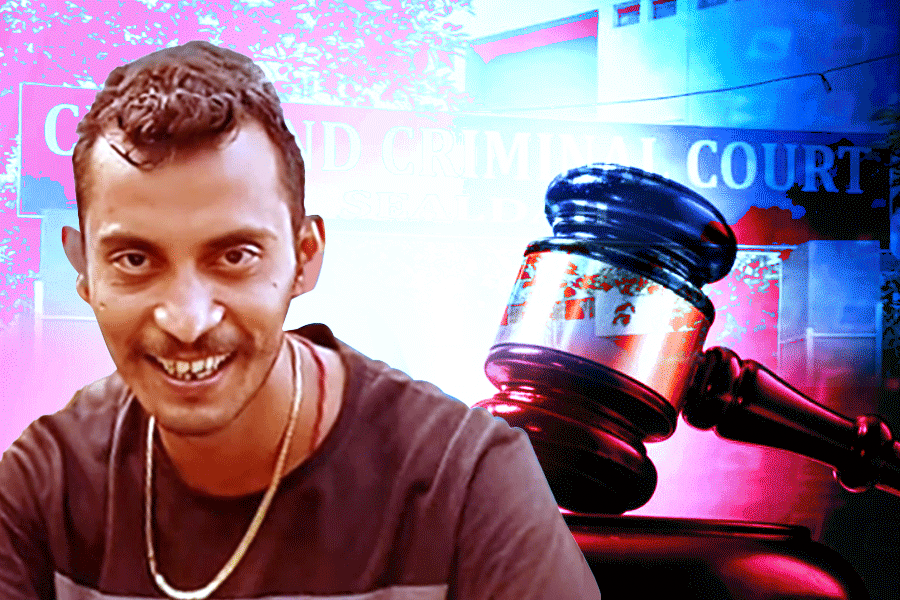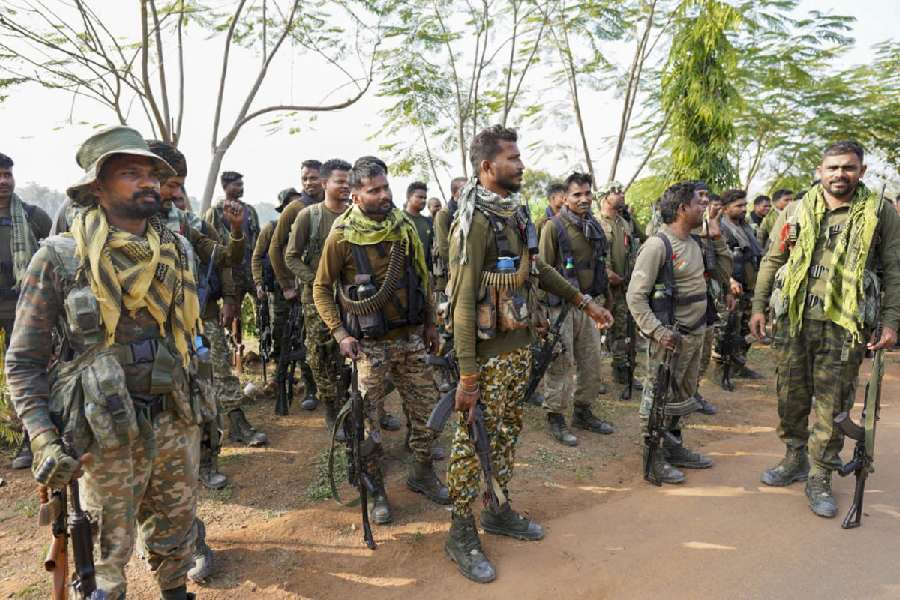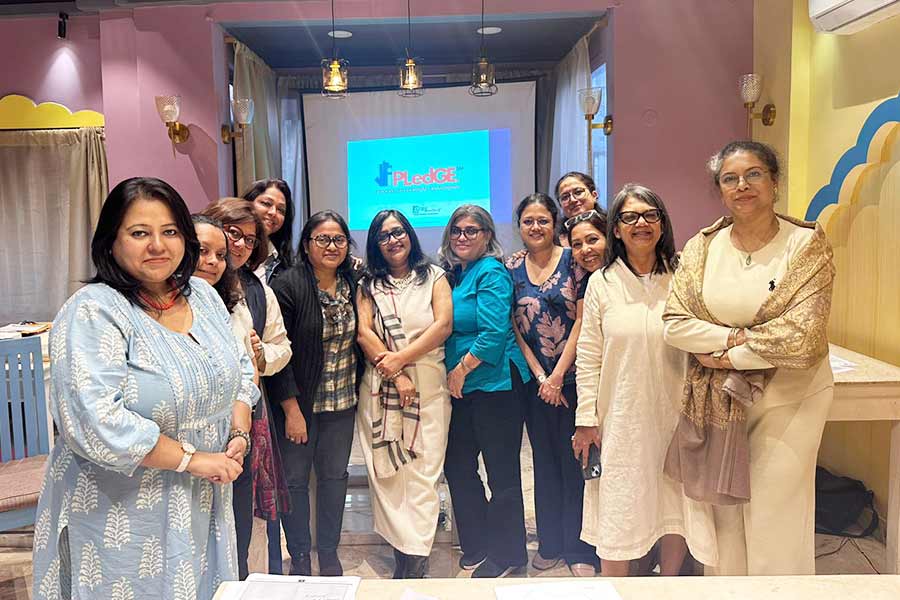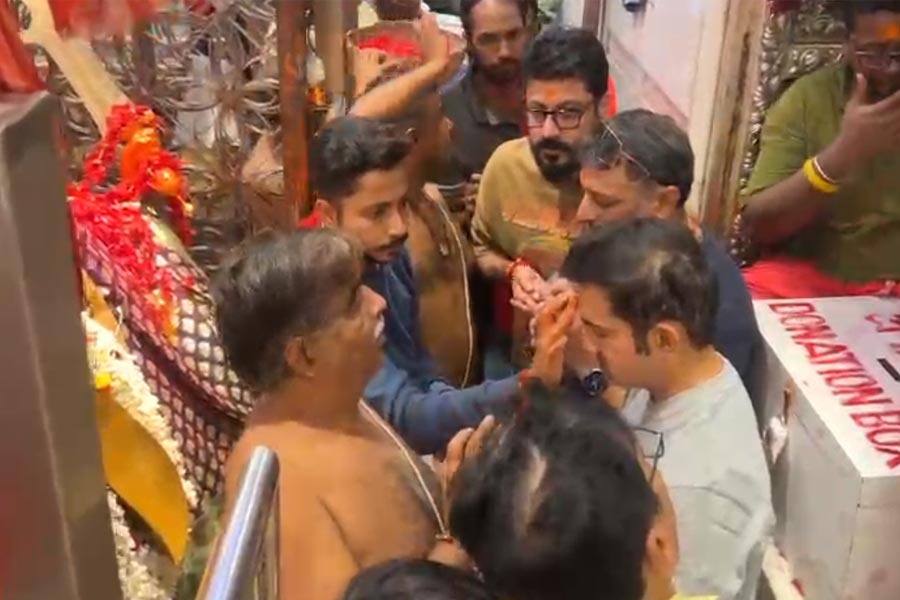
The narrow entrance to the State Archaeological Museum, located next to the Behala Bazaar Metro gate, remains closeted from the public eye between scores of hawker stalls on Diamond Harbour Road. Housed in the same complex as that of a heritage property, the museum is not just an intriguing stop for history buffs but should be a must-see for everyone to get a better understanding of the rich cultural history of West Bengal that dates back several centuries. With an entry fee of Rs 20, the displays are worth every rupee. The museum remains open from Wednesdays to Sundays, 11am-4.30pm. The museum on Satyen Roy Road does not allow photography inside and has a strict policy against the use of cameras and even mobile phones to click pictures and videos. One can click pictures of the exteriors of the museum, where there are several replica figurines
All photographs by Soumyajit Dey
The divinity of this replica (in picture) strikes you at once. Inside the building, divided across two floors, the State Archaeological Museum has two exhibit halls on the ground floor, the first which has terracotta craft from Jalpaiguri, Farakka Banghar and Murshidabad. A few sculptures dating back to the 11th century are also on display along with pictures of the pioneers, including Rakhaldas Bandyopadhyay who played a significant role in the unravelling of the history of Bengal beyond the narratives of different rulers. An ivory chess set from 18th century Murshidabad is probably the most attractive piece of history on display. Glazed bricks and porcelain bowls from the 15th and 16th century Malda also provide an intriguing view of craftsmanship from that era. This section is called Bengal’s Sites and Sights

Exquisite replica of another temple (in picture) on the lawn of the museum. The second exhibit hall is that of paintings of West Bengal that included paintings from the 11th century depicting various gods and goddesses. Paintings done on several mediums from canvas to wood and using old techniques depict the changing face of Bengal over the centuries. Most paintings originate from Kalighat, hence the depiction of several Hindu deities. As you walk out of the second exhibit hall, you will notice a mobile van with coins and artefacts from different dynasties, including the Gupta period, with explanatory cards written in Bengali
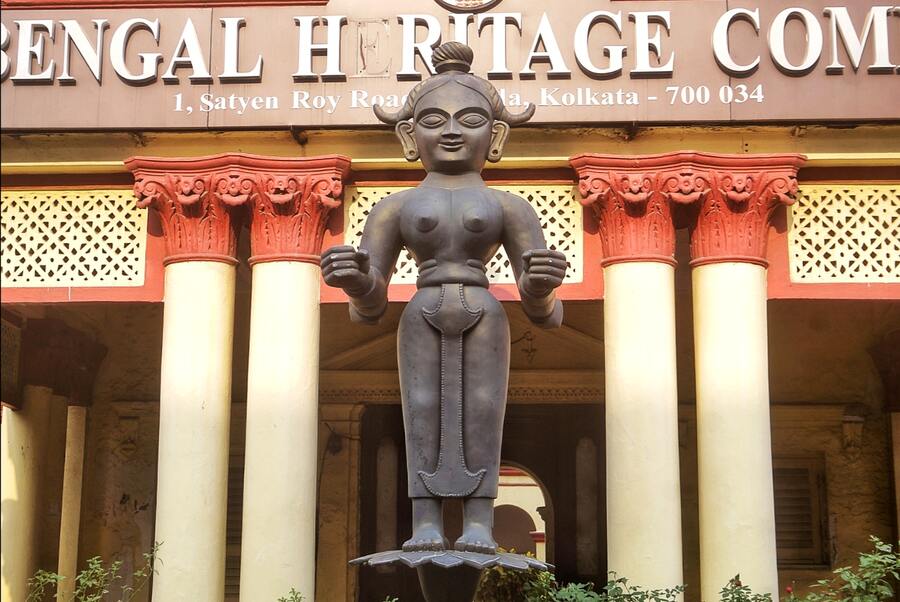
The showstopper (in picture) just as you enter the heritage complex from the main road. On the walk upstairs to the first floor, the walls are decorated with collages displaying Bengal Sultan coins, terracotta panels and more. Several large-sized sculptures greet visitors. The first exhibit hall on this floor is filled with sculptures of various deities. Vishnu, Surya, Ganga, Yamuna, Chamunda, Agni, Ganesha across different centuries, from 9th century onwards all the way up to the 19th century show how the craft changed over time and so did the medium of art. The oldest display here is that of terracotta figures tracing back to the 1st century

The black beauty of a sculpture (in picture). Inside, the next exhibit hall probably provides the best viewing experience. Walking into the room one sees a large-scale replica of a Buddhist monastery in Nandadirghi. Showing how the monastery was planned out, the display will make you wonder how something so sophisticated and so well planned was made several centuries ago. The walls of this particular exhibit display the different panels of what would have been present on the walls of the Buddhist monastery. Various animal terracotta plaques and even zodiac signs are on display along with monoliths and tools from the era. A large-scale model of archaeological sites and remains at Jagjivanpur in Malda is also present in this exhibit. Both large-scale models are 30x30 feet and town planning from centuries gone by
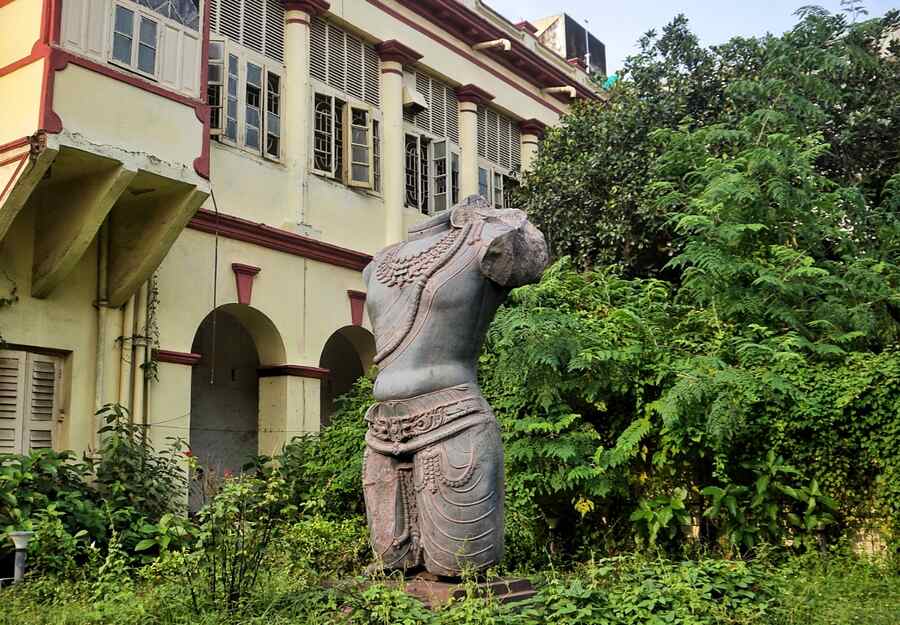
The headless torso sculpture (in picture) stands tall adjacent to the abandoned heritage house. With two more exhibits on the same floor, one shows excavations from Murshidabad including microliths from prehistoric periods, metal sculptures from Bengal and even the age old figure of mother and child, something we have all seen in our history books while studying the Indus Valley Civilisation. When you see the small scales of these figures, you will wonder how they made these figures with such intricate detail and the answer would be wax moulds. Detailed inscriptions about the process of making these figures is present in the exhibit to give one a step-by-step understanding of the craft

The sculpture with the many faces (in picture). Terracotta seal and sealings, coins, jewellery, wood and ivory artefacts, bone artefacts, and early historic pottery from South 24-Parganas as well as narratives and social scene from Chandraketugarh will intrigue you into wondering why is it that we do not study the history of Bengal more in depth. While history is taught to us in the form of eras of different rulers, have you ever wondered how Bengal must have looked during the time of the Delhi Sultanate? Or even further back what was the landscape of Bengal like during the times of the Indus Valley Civilisation. These are questions we should be asking and hence, the need for everyone to spend an hour at the State Archaeological Museum. Expand your imagination and look beyond the history of the ruler, change the narratives and dive deep into Bengal’s historical depths with a visit to this still hidden museum in Behala
